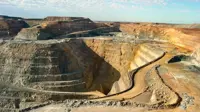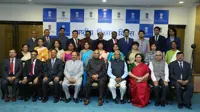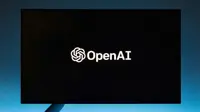Modi inaugurates J&K’s Kishanganga hydel project; launches Pakal Dul project
21 May 2018
Prime Minister Narendra Modi on Saturday inaugurated the Kishanganga Hydroelectric Project and laid the foundation stone of the Pakal Dul Power Project in Jammu & Kashmir.
The Pakal Dul, with 1,000 MW capacity, will be the largest hydro-electric project in Jammu & Kashmir on completion. It is also the first storage project in Jammu & Kashmir.
The 330 MW Kishanganga Hydro Electric Project, located in Bandipora district of Jammu and Kashmir is a run of river scheme. All units of the project have been sychronised on 30 March 2018 and the annual generation of the main project is 1,712.96 million units. The project has been proposed to be completed at a cost of Rs5,882 crore.
Kishangana Project will provide 13 per cent of free power to the state, worth around Rs133 crore per year. The project will bring other benefits to the state like employment to the people of J&K, infrastructure development, etc. It is estimated that the project engaged about 1,850 local persons during construction stage and 750 local persons during operation stage through direct and indirect employment. The project was handed over to NHPC for execution by the state government after an MoU was signed between J&K government and the union ministry of power in July 2000.
The project cost of Pakal Dul as per CCEA sanction is Rs8,112.12 crore and is supported by the government of India as well as the government of J&K. The timelines for implementation is 66 months from the start of the project. The project is capable of additional generation of 650 MU in downstream projects as it is a storage type project and will improve water availability during the lean season.
Pakal Dul project will bring immense benefits for J&K. Around 3,000 persons will be employed directly / indirectly during construction phase of the project. Further, around 500 persons will be employed directly / indirectly during operation phase of the Project.
It has been agreed that the government of J&K will be getting 12 per cent free power after 10 years of commissioning of the project and water usage charges as applicable. Additional 1 per cent free power will go towards local area development fund (LADF). The government of J&K has first right to purchase balance power of NHPC (49 per cent) & PTC (2 per cent). Furthermore, local population will be benefitted by the improvement and widening of roads and improvement of bridges under the project.
The project will feature a concrete faced rockfill dam (CFRD) of 37 metre height, a horse-shoe shaped head race tunnel (HRT) of 5.2 metre dia and 23.2 km total length.
It will have three underground power house units of 110 MW each (330 MW).
A 37 metre high dam has constructed at Gurez to divert water of Kishanganga River. The water is being diverted through a tunnel of length of 23.20 km, out of which 14.75 km has been executed by TBM using latest tunnelling technology of Tunnel Boring Machine.
All units of the project have been synchronised as of 30 March 2018.
The Kishanganga project has been proposed to be completed at a cost of Rs5,882 crore, out of which the government of India has already extended a support of subordinate debt of Rs2,380.44 crore (at 1 per cent interest rate) for the construction of the project.
The 1,000 MW Pakal Dul project is being implemented by the Chenab Valley Power Projects (Private) Limited (CVPPPL), which is a joint venture of NHPC (49 per cent), JKSPDC (49 per cent) and PTC (2 per cent). The project consists of the Kiru (624 MW) and Kwar (540 MW) HE Projects. In addition, CVPP is investigating in Dul Hasti Stage II HE project.
The union ministry of power had, on 28 October 2014, conveyed the sanction for implementation of Pakal Dul by CVPP. The Pakal Dul HEP will generate 3,330.18 million units of energy in a 90 per cent dependable year and all clearances have been obtained for the Project.
The project comprises four underground power house units of 250 MW each (1000 MW), four horse-shoe shaped tail race tunnels (TRTs) of 5.5 m dia and each 125 metre long each.
Letter of award for the project was issued on 21 February 2018 and mobilization is in progress. Tendering of other packages is in progress.
The project cost as per CCEA sanction is Rs8,112.12 crore, which includes Rs2,500 crore subordinate debt from GoI, equity on behalf of JKSPDC / GoJK (Rs1,192 crore), which also includes a central government grant to CVPP. The J&K government has sanctioned waiver of 12 per cent free power and water user charges for first ten years from commissioning of the project.
Works contracts taxes and entry taxes have also been exempted prior to GST implementation. The project is supported by the Government of India as well as government of J&K.
Timeline for implementation of the project is 66 months from the start of the project.
.webp)

.webp)


.webp)

























